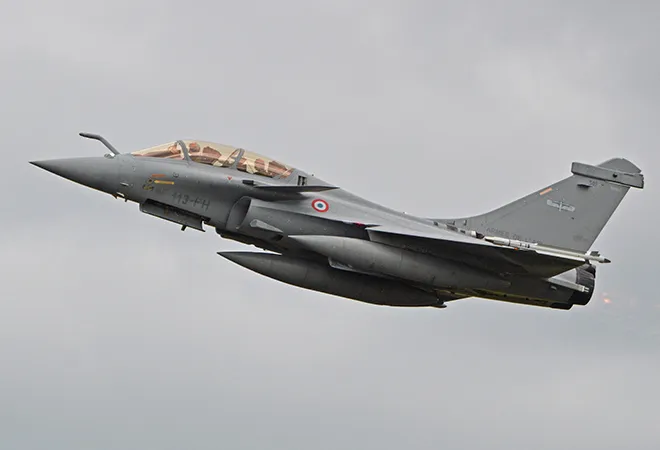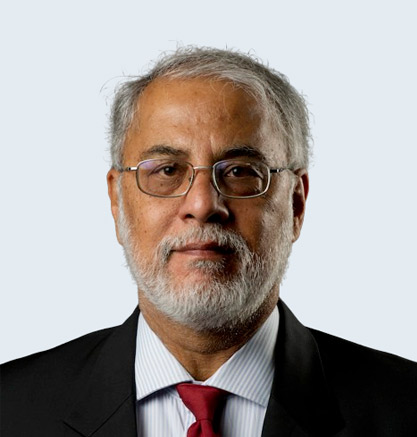-
CENTRES
Progammes & Centres
Location

The Supreme Court bench that has dismissed all the petitions relating to the Rafale deal, has taken a narrow and orthodox view of the issue.
The judgment read out by Chief Justice Ranjan Gogoi has said that the need for the aircraft and its quality are not in doubt. That is, indeed, true. The aircraft is first-rate, and, yes, the Indian Air Force needs them badly. Further, it has said that issues relating to business decisions such as pricing and choice of offset partner, are not within its purview. But that is precisely where the rub lies.
The allegation against the ruling party is that it bought the aircraft at a vastly inflated price, which was related to the issue of offsets being given to an inexperienced company.
It is the manner in which the government acquired the aircraft that is being questioned, and the apex court has not quite looked at that.
Essentially, the court seems to have argued that national security concerns override many of the concerns expressed by the petitioners, and in any case, the apex court cannot become an appellate court for defence deals.
They said they had no reason to doubt the decision-making process and nor was there any material to show that there was commercial favouritism in the deal, despite allegations that the Modi government had taken the offset contract from the Hindustan Aeronautics Ltd and given it to Anil Ambani’s Reliance Defence.
Petitions had demanded a court-monitored investigation into the deal after former President Hollande told a French journal in September that the Indian government had proposed Ambani’s company as a partner for the deal. The Congress accused Prime Minister Modi and his government of corruption and crony capitalism, and demanded that the pricing details of the aircraft be made public. The government had rejected this citing ‘secrecy clauses’ in the deal.
Notwithstanding the Supreme Court’s action, the questions surrounding the deal are not going to go away. We haven’t really got answers for some important aspects of the deal.
First, how come a deal for 126 aircraft was suddenly reduced to 36? That the Indian Air Force needs more fighters is evident from the fact that earlier this year, the IAF put out a formal Request for Information (RFI) for 114 fighter aircraft, and, surprise, surprise, Dassault is among the six companies who have responded, offering its Rafale.
So we are in a bizzare situation where the government first accepted the need for 126 aircraft, chose the Rafale, then for reasons it has not disclosed, reduced the number to 36, and has now expressed a desire to acquire 114 more.
Considering that the Rafale won the last competition, we would assume that they would win it again and that we would end up paying more for what we could have acquired several years ago, or even a year ago. The Indian Air Force and the government would then have tied themselves into knots.
Second, of course, how and why Dassault chose as its partner a company (Reliance Defence) which has no experience in the aviation business.
One can understand why HAL was rejected—its record for quality control is pretty shoddy. But there are other Indian companies that have considerable experience in manufacturing defence products. Actually, the basic question that can be asked is: why offsets?
Because it is a well-known practice that defence companies simply add the cost of offsets to their base price for a product. Indeed, if you do not ask for them, you can get that as a discount on the price. The theory behind offsets is that they will help create a defence manufacturing eco-system by compelling manufacturers to invest in making parts of the product in India.
The reality has actually been otherwise. Those who have invested have done so in a straightforward way, not because they were compelled to do so, but because of offsets.
There is, of course, a possibility which we can only examine as a speculation since it is so sensitive that no information will be forthcoming. That is, that the government was in no position to acquire the entire lot of 126 Rafales and decided on 36 because it urgently needed to upgrade the aircraft that are designated for use by the Strategic Forces Command, who are tasked to deliver nuclear strikes.
These aircraft would have special bells and whistles which could include hardening their electronics for EMP, as well as equipment to penetrate enemy air space. So, National Security Adviser A K Doval, who is in-charge of the nuclear arsenal, persuaded the prime minister to acquire a limited number of the highly capable aircraft.
That was the time Modi was riding high and he took a peremptory decision to dump the old deal and initiate a new one, with little regard to procedures and process.
As for explaining the choice of Reliance Defence and Anil Ambani, that, too, will have to remain in the realm of speculation, because we have Hollande’s word against that of Dassault. And one of them is an interested party.
It would be too much to expect the Opposition not to keep hold of the issue as the country goes into a general election. The Rafale deal and the SC judgment leaves too many questions unanswered. At this point the judicial system has said what it had to, but the political system, too will have to have its say because the politics of the time demands it.
This commentary originally appeared in The Quint.
The views expressed above belong to the author(s). ORF research and analyses now available on Telegram! Click here to access our curated content — blogs, longforms and interviews.

Manoj Joshi is a Distinguished Fellow at the ORF. He has been a journalist specialising on national and international politics and is a commentator and ...
Read More +